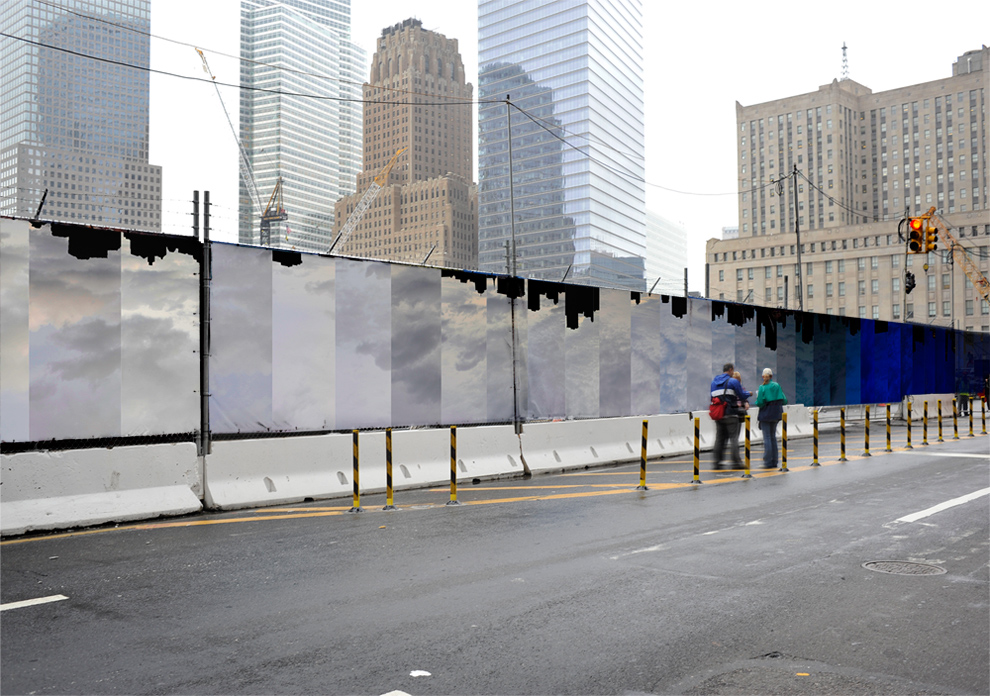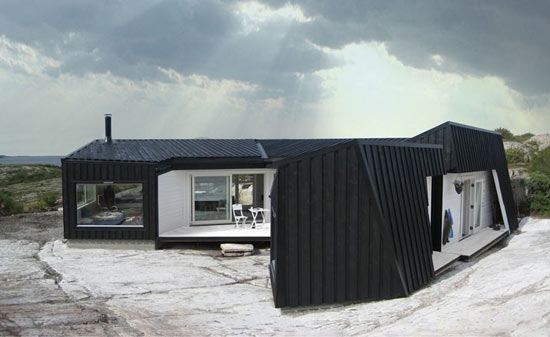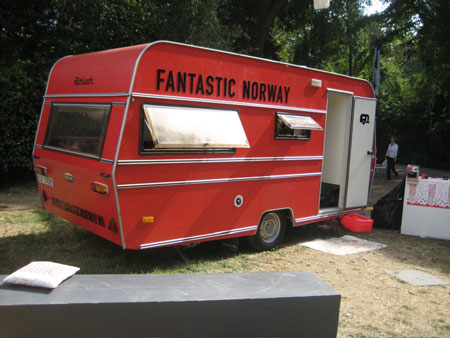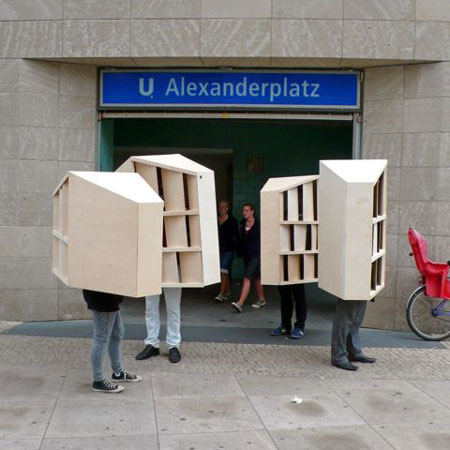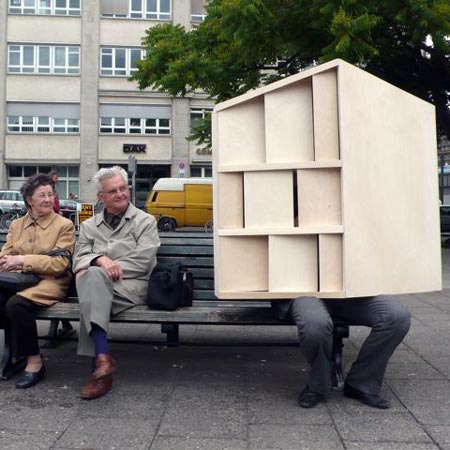The city of New York is getting ready to review thousands of entries for its new Urban Canvas competition as the deadline for submissions closes in. Embarking on an ambitious initiative to enhance the New York’s ever-changing urban landscape, city officials have solicited artists to submit ideas for transforming the thousands of temporary construction awnings and construction fences that are a by-product of constant construction in the city. As vacant lots and derelict city buildings are transformed into architectural gems (or more likely into painfully anonymous real estate developments), the plywood walls and scaffold awnings that are put in place to protect pedestrians will themselves be transformed into objects worthy of a second look even from New York’s trendy urban flaneurs.
Utilizing as their canvases structures that protrude confrontationally into sidewalks or even wrap around them, artists have been given the potential to create installations that will surround and envelope pedestrians through real spatial interaction with sidewalk zones. Moreover, the temporary nature of these urban canvases suits the current preoccupation with ethereality and temporality in the contemporary art scene, though it may be difficult to create art with this kind of conceptual depth on the side of a construction fence (and get it approved by a literal-minded panel of city officials). Nonetheless, John Locke, a graphic designer and architect from New York, was able to come up with a submission for the World Trade Center site construction fence that intelligently encompasses those very themes in a way that is relevant to the New York urban landscape:
Locke’s piece focuses on the negative space between buildings in the New York skyline, drawing attention the fact that it is not just the skyline that changes with the construction of a new building but also the shape of the sky that is constantly changed by urban construction projects. By covering the fence with upside-down photographs of the sky above Manhattan, the buildings “become the void,” and “the sky is now the subject,” according to the artist.
Though there’s no limit to what artists in the Urban Canvas competition might come up with, a smaller scaled program sponsored by the New York City Downtown Alliance since 2007 (and covered in the New York Times) has produced some interesting results in the city’s downtown neighbourhood that may give us an idea of the kinds of installations to expect out of the city-wide Urban Canvas competition:
 GRO Architects, "Best Pedestrian Route," construction awning installation on John Street at Broadway, New York
GRO Architects, "Best Pedestrian Route," construction awning installation on John Street at Broadway, New YorkThis one reminds me of Fruit Stripe gum:
In particular, this 2007 installation proposed for a section of scaffolding on Fulton Street in New York suggests the kind of street-changing interventions that might come out of the Urban Canvas competition:
 Carolina Cisneros, Mateo Pinto, and Carlos J. Gomez, submission for the Downtown Alliance construction fence project
Carolina Cisneros, Mateo Pinto, and Carlos J. Gomez, submission for the Downtown Alliance construction fence projectThe idea of this particular piece for Fulton Street was to draw attention to visual pollution created by the hundreds of construction sites around the city. The artists appropriated the bright colors and garish patterns of construction site equipment in a way that is jarring yet visually intriguing, ironically finding beauty in the loud patterns of the very objects the piece intends to criticize.
Far more publicized than the earlier Downtown Alliance competition and drawing submissions from artists across the country, the Urban Canvas competition promises to create real, substantive public art rather than just fickle decoration. And the best part: soon you’ll be able to vote here on the project’s website for submissions you like once officials have decided on competition finalists. Surely this project will be able to provide at least a little bit of aesthetic respite and visual diversion to the lives of a lot of stressed out New Yorkers, and it is one that we are likely to see repeated in cities across the country that are also looking for a meaningful way to soften the visual impact of some of their own construction sites.

